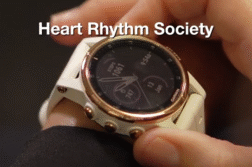Pittsburgh, Pa. (Ivanhoe Newswire)— One in 18 people, or five% of the U.S. population, has arrhythmia, a condition where the heart fails to beat at the correct time. Doctors are testing a new treatment for patients with a severe type of arrhythmia that starts in the bottom chambers of the heart. It’s a treatment traditionally used for cancer patients.
It’s a condition that, if untreated, could lead to sudden cardiac arrest and death.
Krishna Kancharla, MD says, “Ventricular tachycardia is basically a description of the heart rate going fast, typically over 100 beats a minute, but usually really over 200 beats per minute.”
Ventricular tachycardia, or VT, is commonly treated with medication or a procedure called catheter ablation to stop the electrical signals causing the abnormal heartbeat. But neither treatment is perfect.
“I can tell you that at least up to 40% of the patients five years after receiving traditional therapy will have recurrences,” Dr. Kancharla says.
Doctors are testing stereotactic body radiation therapy, or SBRT, on VT patients after other methods fail. Doctors determine the precise area producing the abnormal arrhythmia, then deliver the radiation.
Adam Olson, MD explains, “This treatment is only done in one treatment as opposed to some of the other uses of SBRT where we would do something like three or five treatments. We just do it all at once.”
Doctors say treating the area just once will minimize radiation risk. An experimental therapy that may put the heart back into rhythm in one outpatient visit.
The Food and Drug Administration has granted breakthrough device designation to the system for the treatment of VT. SBRT is traditionally used to target tumors in parts of the body other than the spine, head, and neck.
Contributor(s) to this news report include: Cyndy McGrath, Producer; Kirk Manson, Videographer; Roque Correa, Editor.
To receive a free weekly e-mail on medical breakthroughs from Ivanhoe, sign up at: http://www.ivanhoe.com/ftk
Source:
https://www.scripps.org/sparkle-assets/documents/heart_rhythm_facts.pdf
MEDICAL BREAKTHROUGHS
RESEARCH SUMMARY
TOPIC: RADIATION RIDS THE HEART OF DANGEROUS ARRHYTHMIA?
REPORT: MB #4981
VENTRICULAR TACHYCARDIA BACKGROUND: Ventricular tachycardia is when a person experiences a fast abnormal heart rate. Starting in your hearts lower chambers, called the ventricles, it is defined as three or more heart beats in a row, at a rate of more than 100 beats per minute. If this happens for more than 30 seconds, it can become life threatening. This is because a rapid heart beat does not give your heart enough time to fill with blood before it contracts again, causing the blood flow to be affected throughout the rest of the body. You could be at risk for ventricular tachycardia if you experience other heart problems that can damage the normal heart function. You are at higher risk of ventricular tachycardia if you have abnormal heart valves, cardiomyopathy, heart failure, coronary artery disease, or a previous heart attack. Other risks include conditions that cause abnormal heart muscle, such as hypertrophic cardiomyopathy, diseases that can get inside the heart muscle, such as sarcoidosis, diseases that alter properties within the heart rhythm itself such as long QT syndrome or brugada syndrome. Or, with some cases, VT occurs when there are no other heart problems.
(Source: https://www.cedars-sinai.org/health-library/diseases-and-conditions/v/ventricular-tachycardia-1.html)
VENTRICULAR TACHYCARDIA DIAGNOSIS: After evaluating your symptoms which may include, dizziness, shortness of breath, lightheadedness, feeling as if your heart is racing (palpitations), chest pain (angina), your doctor will most likely preform an ECG. An ECG is the most common tool used to diagnose ventricular tachycardia. It uses small sensors called electrodes that record the timing and strength of electrical signals flowing through your heart. A doctor can also use cardiac imaging to determine whether you have ventricular tachycardia as well as electrophysical testing, stress testing, and tilt table testing.
(Source: https://www.mayoclinic.org/diseases-conditions/ventricular-tachycardia/symptoms-causes/syc-20355138)
NEW TECHNOLOGY: The most recent research on ventricular tachycardia comes from the Washington University School of Medicine in St. Louis. The researchers suggest that radiation therapy can reprogram heart muscle cells to what appears to be a younger state. This means they can fix electrical problems that cause life threatening issues without the need for an invasive procedure. A catheter ablation is what is traditionally used to treat ventricular tachycardia; it is threaded into the heart and the tissue that is triggering the arrythmia is burned so that a scar will block the errant signals. Now, studies show that radiation normally used to treat cancer, can reprogram the heart muscle cells to a younger and perhaps healthier state, fixing the electrical problem in the cells themselves without needing scar tissue to block the overactive circuits.
(Source: https://www.sciencedaily.com/releases/2021/09/210924104055.htm)
FOR MORE INFORMATION ON THIS REPORT, PLEASE CONTACT:
CYNTHIA PATTON
If this story or any other Ivanhoe story has impacted your life or prompted you or someone you know to seek or change treatments, please let us know by contacting Marjorie Bekaert Thomas at mthomas@ivanhoe.com




